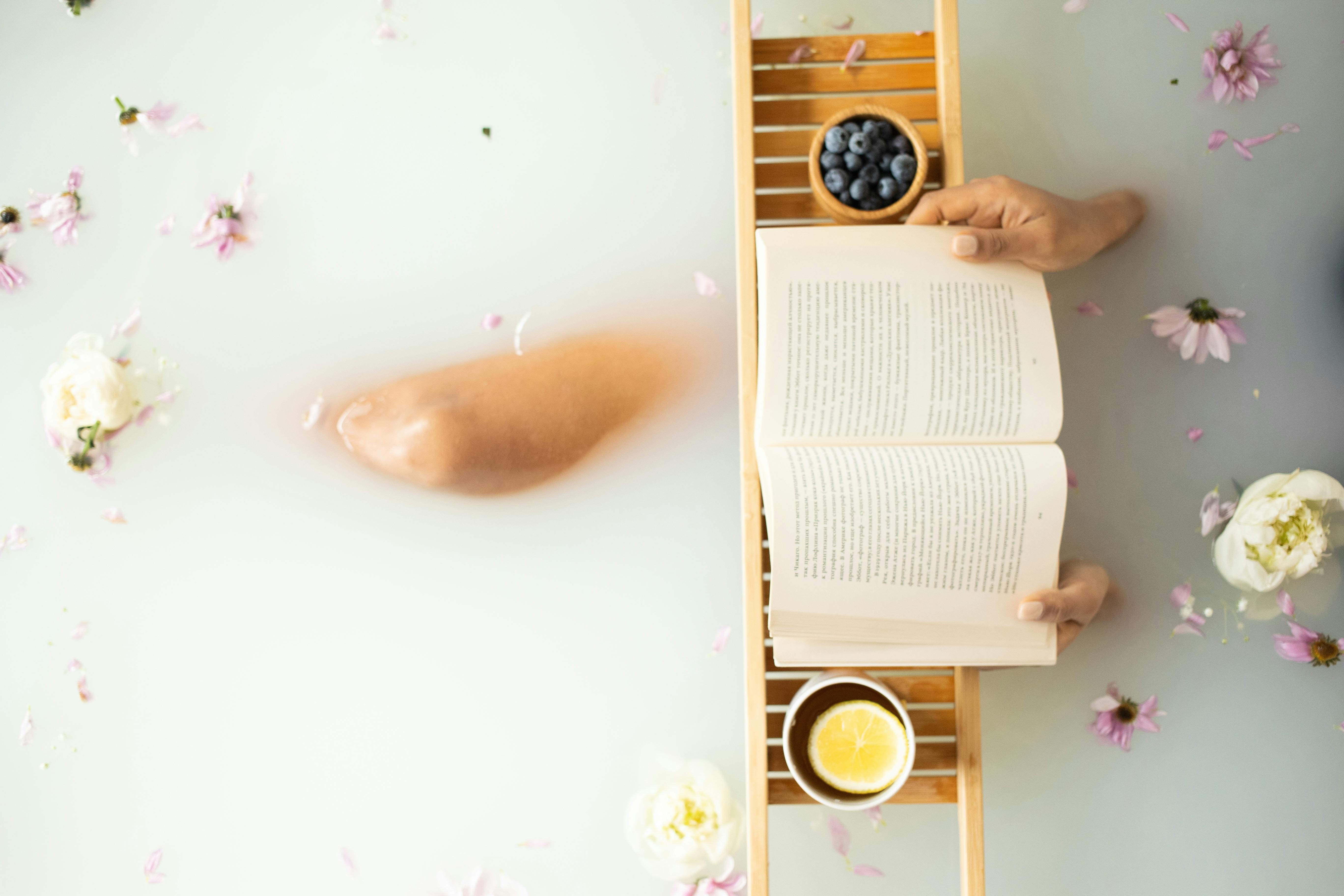Blueberries are a popular berry that is both tasty and healthy. But, in order to grow and produce an abundant crop of berries, blueberries need the right amount of light. This article will discuss how much light blueberries need in order to thrive.Blueberries require full sun for 6 to 8 hours a day. They can grow in partial shade, but will have fewer blooms and fruits. Blueberries prefer slightly acidic soil with a pH between 4.2 and 5.5, and benefit from organic matter such as compost or manure.
Sunlight Requirements for Blueberry Plants
Blueberry plants need plenty of sunlight to thrive and produce healthy fruit. Most blueberry varieties require full sun, which is defined as at least six hours of direct sunlight each day. This means that for most areas, the best location for blueberry plants is in an open field or garden with plenty of unobstructed sunlight. If you are planting in a shaded area, look for varieties that are adapted to partial shade. In addition, blueberry plants should be planted in well-drained soil that has a pH level between 4.5 and 5.5.
Blueberries also benefit from regular fertilization throughout the growing season. Fertilizer should be applied once in the spring and again in mid-summer to keep the plants healthy and producing fruit. Mulching is also recommended to help retain moisture and reduce weeds in the garden bed. Lastly, while blueberries don’t require a lot of water on a regular basis, they do need a steady supply of water during their fruiting season (typically late spring into summer). Without adequate water, fruit production will suffer significantly.
Types of Lighting for Blueberries
Blueberries are a delicious and nutritious fruit, and they are becoming increasingly popular among home gardeners. However, in order for blueberries to thrive, they must be provided with the right type of lighting. Different types of lights can be used to grow blueberries, depending on the needs of the plant and the climate in which they are grown. The most common types of lighting for blueberries include fluorescent bulbs, halogen lamps, LED lights, and natural sunlight.
Fluorescent bulbs are a good choice for blueberry production because they provide a full spectrum of light that is evenly distributed over the entire area. Fluorescent bulbs can also be used to supplement natural sunlight when needed. Halogen lamps are also an option for growing blueberries as they provide a wide range of light that is bright enough to penetrate through foliage and reach all parts of the plant. LED lights are becoming increasingly popular because they provide a very intense level of light and are energy efficient.
Natural sunlight should always be taken into consideration when growing blueberries as it provides essential levels of ultraviolet radiation that helps to keep the plants healthy. When possible, try to locate blueberry plants in areas where they will receive direct sunlight during the day. If direct sunlight is not available, then supplemental lighting may be necessary in order to provide adequate levels of light for optimal growth.
Growing Blueberries in a Greenhouse Setting
Greenhouse farming is an ideal method for growing blueberries. This type of environment gives the plants the protection they need from harsh weather conditions while also providing the necessary access to sunlight and nutrients. A greenhouse also helps to reduce water loss, as the walls help to trap moisture and create a more humid environment that is beneficial for blueberry plants.
When setting up a greenhouse for blueberry cultivation, it is important to choose a location that gets plenty of sunlight and has good air circulation. The ideal temperature range for blueberries is between 60-85°F, so it’s important to make sure your greenhouse stays within this range. Additionally, blueberries require a lot of water, so be sure to provide ample irrigation throughout the season.
Fertilizing your blueberry plants with an appropriate fertilizer can help ensure healthy growth. It’s best to apply a balanced fertilizer such as 10-10-10 at least once every month during the growing season. When applying fertilizer, make sure not to overapply as too much fertilizer can burn your plants’ roots and damage their health.
It’s also important to prune your greenhouses regularly in order to keep them healthy and productive. Pruning encourages bushier growth which leads to more fruit production in the long run. Additionally, pruning removes dead or diseased foliage which helps prevent disease spread throughout your crop.
With proper care and maintenance, you can easily grow healthy and productive blueberry plants in your greenhouse setting. Greenhouse farming is an excellent way for commercial growers or home gardeners alike to produce large amounts of quality berries without having to worry about unpredictable weather conditions or pests damaging their crops.
Growing Blueberries Indoors
Blueberries are a tasty and nutritious addition to any diet, and they can easily be grown indoors. With a little bit of knowledge and effort, you can have a thriving blueberry bush in your home. Here are some tips for growing blueberries indoors:
First, select a variety of blueberry that is suitable for indoor growth. Most varieties of blueberry will do well in an indoor environment, but look for varieties that are specifically adapted to growing indoors. Once you have selected the right variety for your needs, prepare the soil by mixing it with peat moss or other organic matter. This will help keep the soil moist and provide essential nutrients for the blueberry bushes.
Next, provide proper lighting for your blueberry bushes. Blueberries need full sun or bright indirect light in order to produce fruit. If you don’t have access to natural sunlight, you can supplement with artificial lighting such as grow lights or fluorescent bulbs. Make sure to adjust your lighting as necessary throughout the year to ensure that your plants get enough light during their flowering and fruiting stages.
Third, water your blueberry bushes regularly but not excessively. Blueberries need plenty of water to keep them healthy and productive, but they don’t like soggy feet! Allow the top layer of soil to dry out slightly between waterings and check the roots periodically to make sure they are not sitting in waterlogged soil.
Fourth, fertilize your plants regularly with an appropriate fertilizer formulated specifically for blueberries. Blueberries require specific nutrients such as nitrogen and phosphorus in order to produce abundant fruit, so make sure you use a fertilizer specifically designed for this purpose. Fertilize according to package instructions; some fertilizers may need to be applied more often than others depending on the variety you are growing.
Finally, keep an eye out for pests and disease that may affect your plants’ health or fruit production. Common pests such as aphids and caterpillars can be controlled with biological controls such as ladybugs or other beneficial insects, while diseases such as root rot can be treated with fungicides if necessary. Make sure to remove any affected leaves or branches promptly in order to prevent further spread of disease or infestation of pests.
By following these tips for growing blueberries indoors, you can have a thriving crop of delicious berries year-round!

Amount of Light Needed for Optimal Blueberry Production
Growing blueberries can be a challenging yet rewarding endeavor for any gardener. While blueberries are fairly hardy plants that can thrive in a variety of climates, they require plenty of sunlight in order to produce a good crop. To ensure optimal production, it is important to understand how much light blueberries need and the best ways to provide it.
Blueberries need between 8-10 hours of direct sunlight each day in order to produce an abundant crop. If the plants do not receive this amount of light, they will not produce as many berries or will produce smaller, less flavorful fruit. It is also important to note that the intensity of the sunlight matters as well; even if the plants are receiving 8-10 hours of light, if the intensity is not high enough, the berries may still be small or lacking in flavor.
For those who live in areas with long periods of cloudy weather or limited daylight hours during certain seasons, supplemental lighting might be necessary. Grow lights such as LED lights can be used to provide extra light when natural sunlight is lacking. It is important to use the right type and intensity of grow light and adjust it accordingly throughout the seasons in order to ensure optimal production from your blueberry plants.
By understanding how much light your blueberry plants need and finding ways to provide it, you can ensure that your plants get all they need for a healthy and productive crop each season.
Effects of Too Much Light on Blueberry Plants
Blueberry plants need plenty of sunlight in order to produce healthy fruit, but too much light can be detrimental to their growth. Too much exposure to direct sunlight can cause the leaves of blueberry plants to burn, leading to a decrease in production. Additionally, when exposed to too much light, the fruit of blueberry plants can become sunburned and develop blemishes that make them less attractive and marketable.
In order to prevent these issues, it is important to provide blueberry plants with the right amount of light. This means providing adequate shade during hot summer months or using shade cloths or other methods of diffusing the intensity of the sun’s rays. Additionally, pruning can help reduce the amount of direct sunlight that reaches the leaves and fruit of blueberry plants.
Overwatering is another issue that can occur when too much light is present. Blueberry plants require moist soil but not wet soil; if they are overwatered, root rot and other diseases may occur as a result. Therefore, it is important to keep an eye on soil moisture levels and water according to the needs of each plant. If possible, use a water meter or hygrometer to measure soil moisture levels so you can better monitor how much water your plants need.
Finally, it is important to be aware that too much light can cause stress in blueberry plants. When exposed to excessive amounts of direct sunlight for long periods of time, they may become stunted and unproductive over time due to heat stress and other environmental factors. To avoid this issue, move blueberry plants into shadier areas when temperatures begin rising and consider using mulch or other types of ground cover around their roots for additional protection against heat stress.
Overall, providing the right amount of light is essential for healthy blueberry plant growth and production. Too much light can lead to leaf burn, sunburned fruit, root rot, and overall plant stress; therefore it is important to monitor your plants’ exposure levels carefully in order keep them happy and productive!
Benefits of Artificial Lighting for Blueberries
Artificial lighting is a great way to extend the production season of blueberries. Short days and cool temperatures can limit the growth of blueberry plants and reduce yields. Using artificial lighting can help keep blueberry plants producing more fruit throughout the year. Artificial lighting can also be used to provide extra light in areas where natural sunlight is limited. This can be especially beneficial in colder climates or during winter months when there is less natural light available.
The use of artificial lighting can also help improve the quality of blueberry fruit production. Artificial lights can provide more consistent light intensity than natural sunlight, which can help promote more uniform sizes and shapes in berries. Additionally, artificial lighting can be used to extend the flowering period, which will ultimately increase yields and improve berry quality. Finally, artificial lights allow for more precise control over light intensity and duration, which allows for better management of crop growth cycles.
Overall, artificial lighting has many benefits when it comes to growing blueberries. It helps to extend the production season and provide additional light in areas with limited natural sunlight. Additionally, it helps to produce higher-quality berries by providing consistent light intensity and promoting uniform sizes and shapes in berries. Finally, it provides greater control over light intensity and duration so that growers can better manage crop growth cycles.

Conclusion
Blueberries need a minimum of 8 hours of light each day, however more is preferred. In nature, blueberries tend to prefer full sun exposure but will tolerate some partial shade if needed. They also do well with LED lighting options, but it is important to make sure they are receiving the correct amount of light for optimal growth and berry production.
It is also important to remember that blueberries require specific soil and pH levels in order to thrive. Amending the soil with organic matter can help create a healthy environment for the plants to grow in. Blueberries can be a great addition to any garden or landscape, and with proper care can produce an abundance of delicious fruit!
In conclusion, blueberries require at least 8 hours of light each day and thrive in well-drained soils with a slightly acidic pH level. If you are looking to add blueberry bushes to your garden or landscape, make sure you give them enough light and the right conditions for optimal growth. With proper care, they will reward you with an abundance of delicious fruit!



